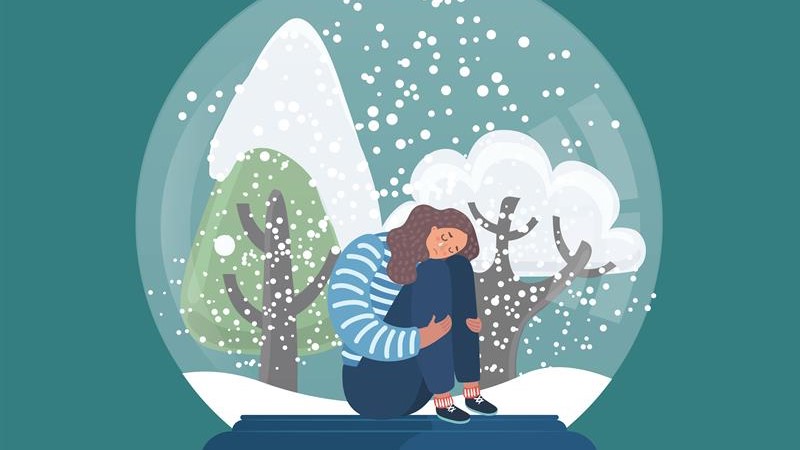Rising Temperatures, Rising Serotonin
The weather is getting warmer, the sun is coming out, and seasonal depression is slowly melting away (The Butler Collegian)
April 19, 2022
It’s officially spring time! Flowers are blooming, the weather is getting warmer, and summer is slowly getting closer. For some people though, winter is their favorite season. They love the cold weather and all the fun activities that come with it. However, others have a hard time during the winter and many experience seasonal depression.
Seasonal depression, also known as Seasonal Affective Disorder (SAD), is depression that occurs at the same time every year. It’s most commonly seen during fall and winter, but people can also experience it during spring and summer. Symptoms and feelings can differ from person to person. However, the common ones are constantly feeling sad or down, losing interest in activities, having low energy, having problems sleeping, feeling hopeless, etc. According to the Mayo Clinic, symptoms can also vary based on what time of year people get seasonal depression. Oversleeping, appetite changes, weight gain, and low energy are more generally seen in patients that experience SAD during the winter months. Whereas insomnia, weight loss, poor appetite and anxiety are associated more with SAD during summer months.
As a person who has experienced some of these symptoms, I would say a majority of them can be underlying and hard to see at first. Recently, the weather has been getting warmer and it was a big eye opener for me. The sunshine and warm weather brightened my day so much to the point where I realized it was partially the seasons that caused sadness. Another symptom that isn’t talked about as much is how days can feel like they’re repeating themselves. Once the weather and school falls into a pattern, days can start to blend together and feel the same. This can contribute to seasonal depression because it doesn’t feel like anything exciting is happening, making it easy to lose motivation. There are numerous different ways people can experience seasonal affective disorder, these are just a few.
Just like with symptoms, the causes can differ from person to person as well. Some of the common ones are your body’s natural clock, as well as serotonin and melatonin levels. Your body has a natural clock, or circadian rhythm. The lack of sunlight and warm weather in fall can actually disrupt this rhythm which leads to feelings of sadness and hopelessness. Reduced sunlight and increased cold weather can change your serotonin and melatonin levels. Both of these things lead to lack of sleep and sadness, common symptoms of SAD. One cause that isn’t talked about as common but definitely is seen, especially in teenagers, is school and work. For students, summer is a time without school and the stress that comes with it. In winter, workloads can build up at school and there is a lot of stress around this time. Being out of school during the summer adds to the idea that it’s a happier and less stressful time.
Seasonal Affective Disorder is different for every single person. Nonetheless, the season is changing and many might be getting out of that sadness and distress they have been feeling. Hopefully, the sunshine will reset everyone’s circadian rhythm and put SAD to a temporary rest.



